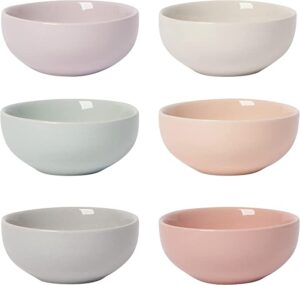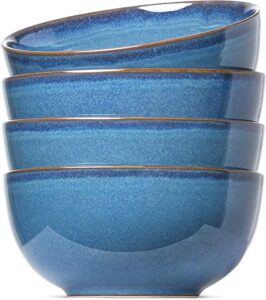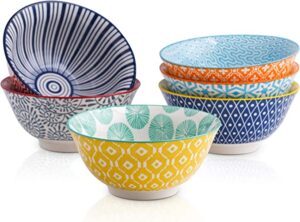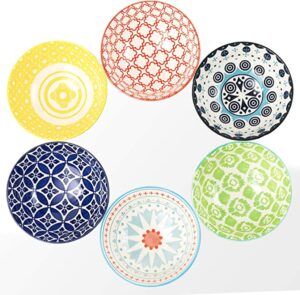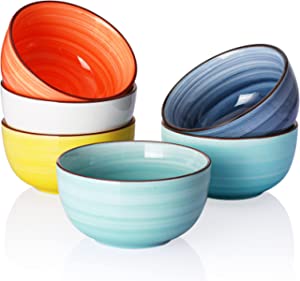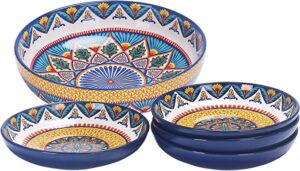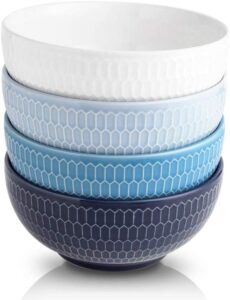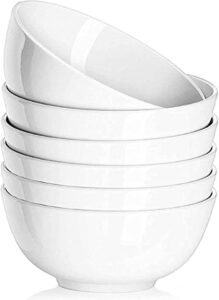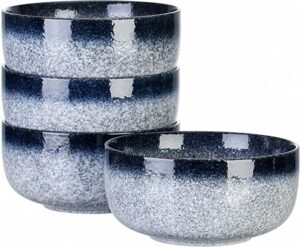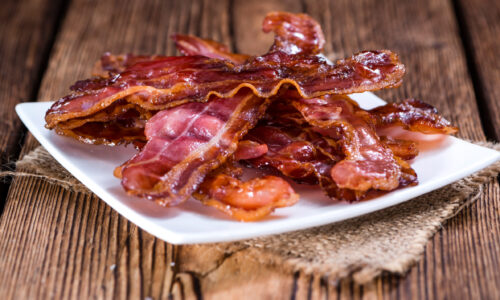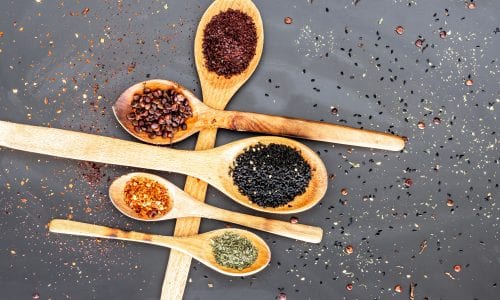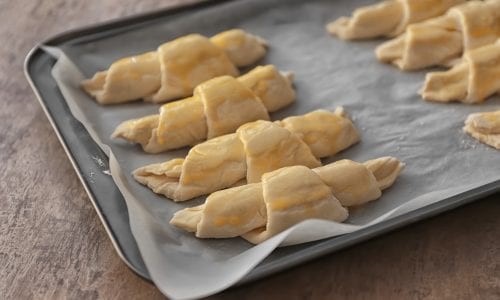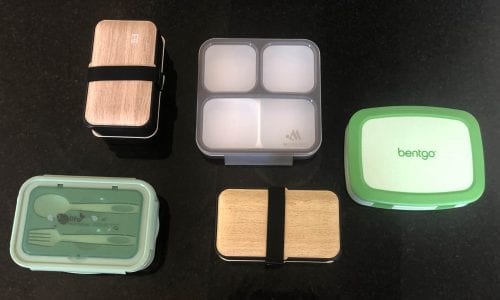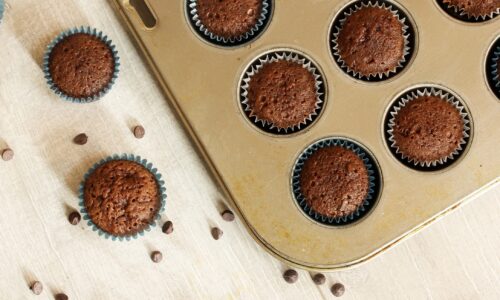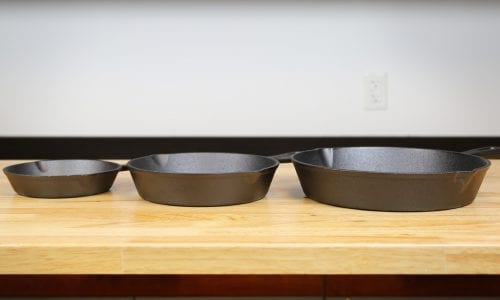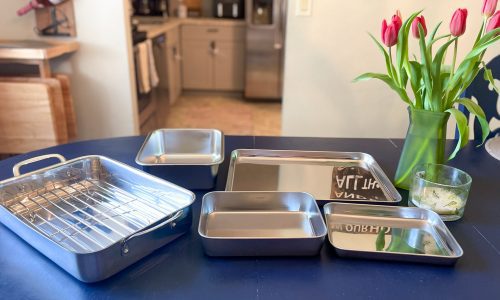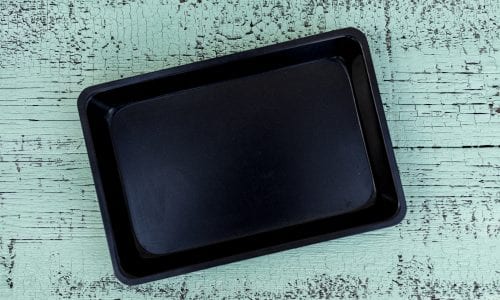The Best Ceramic Bowls
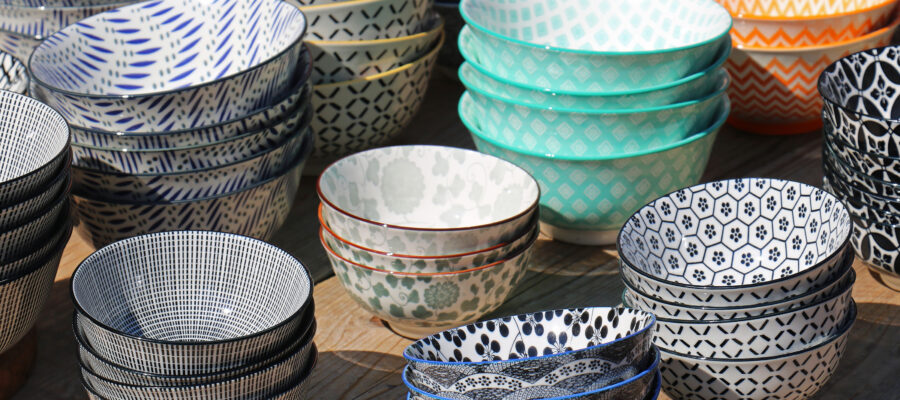
Our Review Process
Don't Waste Your Money is focused on helping you make the best purchasing decision. Our team of experts spends hundreds of hours analyzing, testing, and researching products so you don't have to. Learn more.
Our Picks For The Top Ceramic Bowls
- 1. Now Designs Cloud Lightweight Ceramic Pinch Bowls, 6 Piece
- 2. LE TAUCI Durable Glazed Ceramic Bowl Set, 4 Piece
- 3. Selamica Assorted Colors & Patterns Porcelain Bowls, 6 Piece
- 4. DeeCoo Premium Porcelain Ramen Bowls Set, 6 Piece
- 5. Sweese Multicolor Durable Oven Safe Porcelain Bowls, 6 Piece
- 6. Bico Havana Ceramic Serving & Pasta Bowl Sets, 5 Piece
- 7. KOOV Oven-Safe Embossed Ceramic Bowls, 4 Piece
- 8. DELLING Ultra-Strong Microwave Safe Ceramic Bowls, 6 Piece
- 9. S&Q’S CERAMICS Japanese Noodle Ceramic Bowls, 4 Piece
This multi-colored set of lightweight ceramic bowls is perfect for preparing or serving food. Made from stoneware, these small bowls are also microwave and dishwasher safe. There are several color combinations so that you can match them to your home's decor.
Perfect for Prep and ServingDiversify your dish cabinet with these colorful ceramic bowls.
These stoneware bowls add design flair to your table. Still, they maintain all the best qualities of ceramic, such as heat resistance, durability and versatility, and you can wash or cook with them in your kitchen appliances. They come in various sizes and are lead and cadmium free.
Enjoy Soup in StyleMake eating more fun with these whimsical bowls, perfect for soup or even ice cream.
Add color and excitement to your dining table with these decorative bowls, perfect for dessert, soup and more. This set of six ceramic bowls comes in various sizes, so you can choose which combination works best for your needs. They can go in the dishwasher and withstand heat up to 250 degrees Fahrenheit. The base material is porcelain.
Vibrant Desserts and StewsMeals are more fun when you eat out of a colorful bowl. This set has several sizes and colorful patterns to boot.
Buying Guide
Ceramic bowls and other cookware and serve ware have many advantages. Even though it is breakable, ceramic is relatively durable and resists chipping better than traditional china and other materials.
Still, not all ceramic is the same. Ceramic bowls are made from various base materials. These include stoneware, clay (including different types, like paladin), porcelain and more. Each has its advantages: porcelain is more elegant but less durable; clay is very sturdy but can be heavy; and there are many subtypes of stoneware.
Ceramic coating is heat resistant. That means it can withstand high temperatures. While you should always check the specifications of your particular product, you can probably put your ceramic bowls in the oven to keep hot food or warm leftovers. And while you should always wear protective coverings for your hands, ceramic doesn’t transfer as much heat to you when you handle it.
The ceramic bowls on the list above come in various sizes. Be sure you know the size you need. Most websites will list the length of the top of the bowl’s diameter, but you should look in the product specifications for more information.
Some older types of ceramic contain lead, and even new ceramic pieces can have trace amounts, especially if they’re not explicitly intended for use with food. Double-check with the manufacturer to ensure your bowls contain no lead or other harmful materials.
It might go without saying, but you should choose bowls that match or complement your kitchen or home decor. If you’re in transition décor-wise, opt for neutral colors and patterns that will look good in most kitchens.
What to Look For
- Pay attention to durability. Some types of ceramic are more fragile than others. That’s probably fine for adults, but if there are kids in your family, you’ll likely want something that can withstand some bumps.
- Most ceramic is dishwasher safe, but be sure to check all your products. When in doubt, always hand wash.
- Even if your bowls are oven-safe, some ceramics can only be heated to 200, 250 or 300 degrees. Almost all ceramic will damage above 450 degrees Fahrenheit.
- As mentioned above, double-check that there is no lead or other harmful ingredients in your bowls before using them for food prep and eating.
More to Explore
Ceramic is inorganic and nonmetallic, and it has been around for a long time. Often, ceramic objects survive far longer than other relics of past civilizations. They are fascinating to look at and provide archaeologists, anthropologists and historians with vital information.
The oldest ceramic artifact uncovered to date is about 30,000 years old, dating to around 28,000 BCE. It is a figure of a woman named the Venus of Dolni Vestonice. She was found in the present-day Czech Republic in the ancient settlement of Brno. She wasn’t alone, either; several other ceramic pieces nearby had also survived millennia thanks to this durable material.

